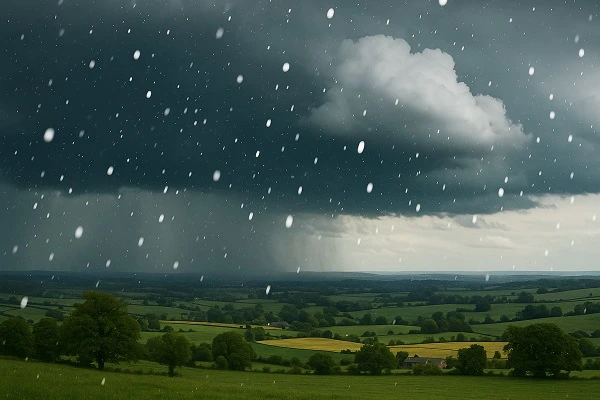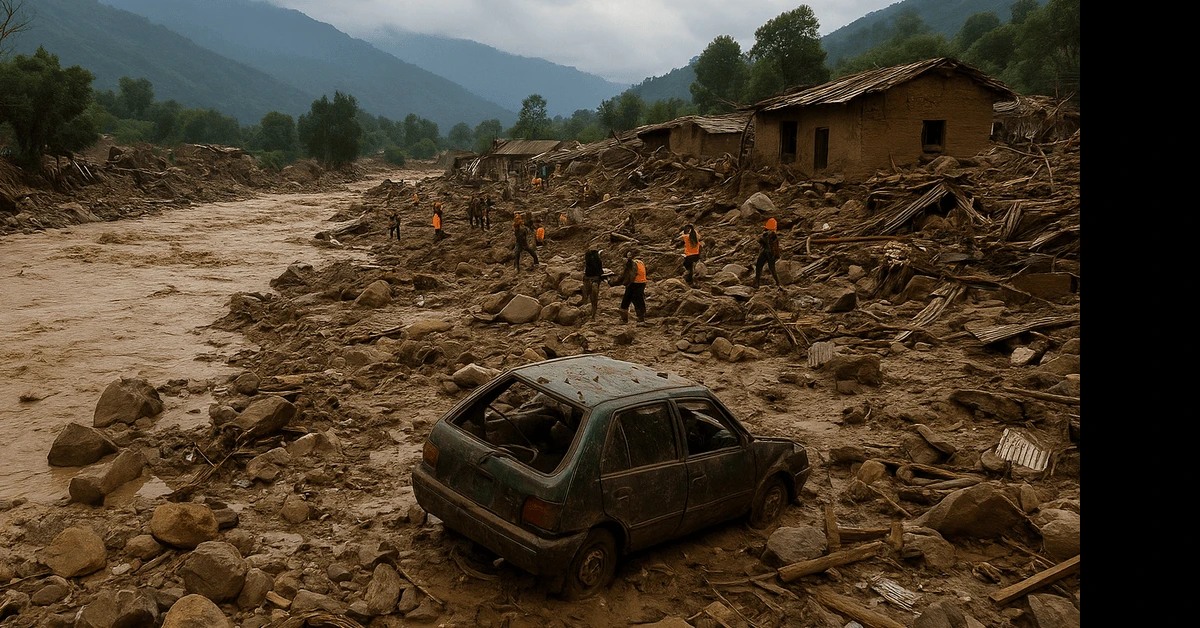Last Updated: July 2, 2025
Future Hailstorm Predictions: What to Expect in Pakistan in 2025 and Beyond

As we move into 2025, the unpredictability of weather events continues to surprise us. One weather phenomenon that has become increasingly frequent and severe in recent years is the hailstorm. Pakistan, known for its diverse climate, is witnessing more intense hailstorms, especially in regions like Khyber Pakhtunkhwa (KP), Punjab, and northern Balochistan. But what does the future hold for hailstorm events? Let's explore the predictions, causes, and safety precautions in the face of these powerful weather events.
Understanding Hailstorms: Nature’s Fury
Hailstorms occur when updrafts in thunderstorms carry raindrops into extremely cold areas of the atmosphere, where they freeze into ice. As these frozen particles move through the storm, they grow larger and heavier until gravity takes over, and they fall to the ground. The size of the hailstones can vary, with some reaching the size of golf balls or even larger.
In recent years, Pakistan has seen a rise in the frequency and severity of hailstorms, with some causing significant damage to infrastructure, crops, and even leading to fatalities. These storms are particularly destructive in agricultural regions, where large hailstones can damage crops, leading to economic losses.
Why Are Hailstorms Becoming More Frequent?
Several factors contribute to the increasing frequency of hailstorms in Pakistan, and climate change is a major factor. As global temperatures rise, the atmosphere can hold more moisture, leading to stronger storms. This creates the perfect environment for hail formation. Additionally, the warming of the atmosphere means that hailstones are more likely to grow larger before falling to the ground.
What Does the Future Hold? Predictions for 2025
According to the latest forecasts from the Pakistan Meteorological Department (PMD) and the National Disaster Management Authority (NDMA), we can expect an increase in the frequency of hailstorms in 2025. The PMD has issued advisories indicating that moderate to heavy rainfall, accompanied by thunderstorms and hailstorms, is likely to affect northern and central regions, including KP, Punjab, and Gilgit-Baltistan, from April 30 to May 4, 2025. This weather pattern is expected to provide some relief from the ongoing heatwave, but it also poses risks due to the potential for hail damage.
In the long term, meteorologists predict that hailstorms will become more widespread across Pakistan, especially in regions that are prone to thunderstorms. The higher temperatures and increased moisture in the atmosphere are expected to result in more severe and frequent weather events. The combination of changing weather patterns and climate change will make it crucial for authorities to monitor these developments closely.
Recent Severe Hailstorm Events
The year 2024 saw a particularly severe hailstorm that hit Islamabad and parts of Punjab and KP. The storm caused extensive damage to infrastructure, including power outages, damaged vehicles, and injuries to several individuals. The unexpected nature of this storm, along with its intensity, highlighted the growing unpredictability of weather events in Pakistan and the need for improved disaster preparedness.
These extreme weather events are becoming a wake-up call for climate scientists and authorities alike. As we head into 2025, experts are urging the public to take proactive measures to protect themselves and their property from potential damage caused by hailstorms.
Safety Precautions: How to Protect Yourself During a Hailstorm
While hailstorms cannot be avoided, there are steps you can take to minimize damage and stay safe:
- Stay Informed: Always keep an eye on weather forecasts and advisories from the PMD and NDMA. Early warnings can help you prepare for incoming storms.
- Protect Property: If a hailstorm is predicted, move vehicles and other vulnerable property to sheltered areas. If possible, cover windows and glass structures to prevent breakage.
- Seek Shelter: Stay indoors during a hailstorm, as the force of hailstones can cause serious injury. If caught outdoors, take cover under sturdy structures like bridges or shelters.
- Avoid Flood-Prone Areas: Hailstorms often bring heavy rainfall, which can lead to flash flooding. Stay away from rivers, streams, and low-lying areas prone to flooding.
- Community Preparedness: Communities should have emergency plans in place, including evacuation routes and shelters in case of extreme weather events.
What Lies Ahead? A Call to Action
The future of hailstorms in Pakistan is closely tied to the broader issue of climate change. As temperatures continue to rise, the frequency and intensity of extreme weather events, including hailstorms, will likely increase. This highlights the importance of climate action to mitigate the effects of global warming and reduce the severity of future storms.
In the meantime, it’s crucial for the government, meteorological agencies, and the public to remain vigilant and prepared for the changing weather patterns. By staying informed and taking proactive safety measures, we can minimize the damage caused by these powerful weather events and protect our communities.
Conclusion: Staying Prepared for the Unpredictable
Hailstorms may be unpredictable, but their increasing frequency in Pakistan is something we can no longer ignore. With the right knowledge and preparation, we can face the challenges posed by these extreme weather events head-on. Let’s stay informed, take action, and work together to safeguard our communities and property from the devastating effects of hailstorms in 2025 and beyond.
You May Also Like:

Pakistani Monsoon Flood Crisis 2025: Current Impact, What to Expect & How to Stay Safe...

Shattered Glass & Skyfall: Islamabad’s Violent Hailstorm Sparks Windscreen Crisis...

Buner Flood 2025: Full Story, Damages, Safety Tips, and Future Risks...

Pakistan’s Cricket Academies Crisis: Why Future Stars Are Wasted Before They Even Shine...

Camera Sensors of the Future: Phones Launching With 200MP & Periscope Lenses...

Who Will Replace Djokovic, Nadal & Federer? The Future of Men’s Tennis...

Starlink and the Race for Satellite Internet in Pakistan: What You Need to Know in 2025...

